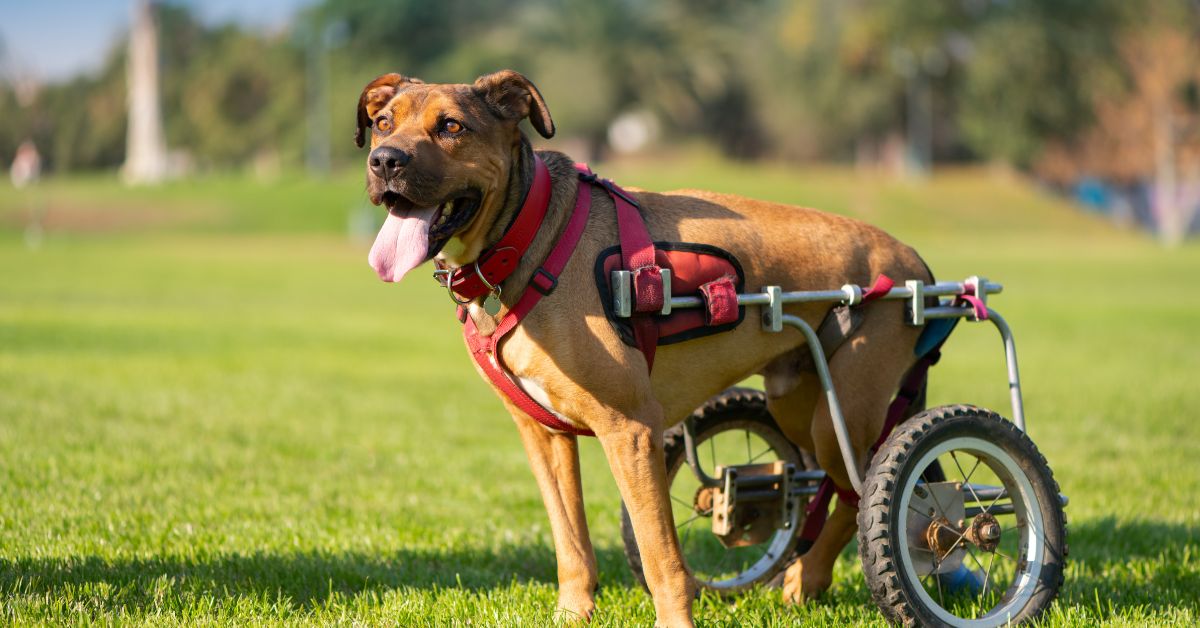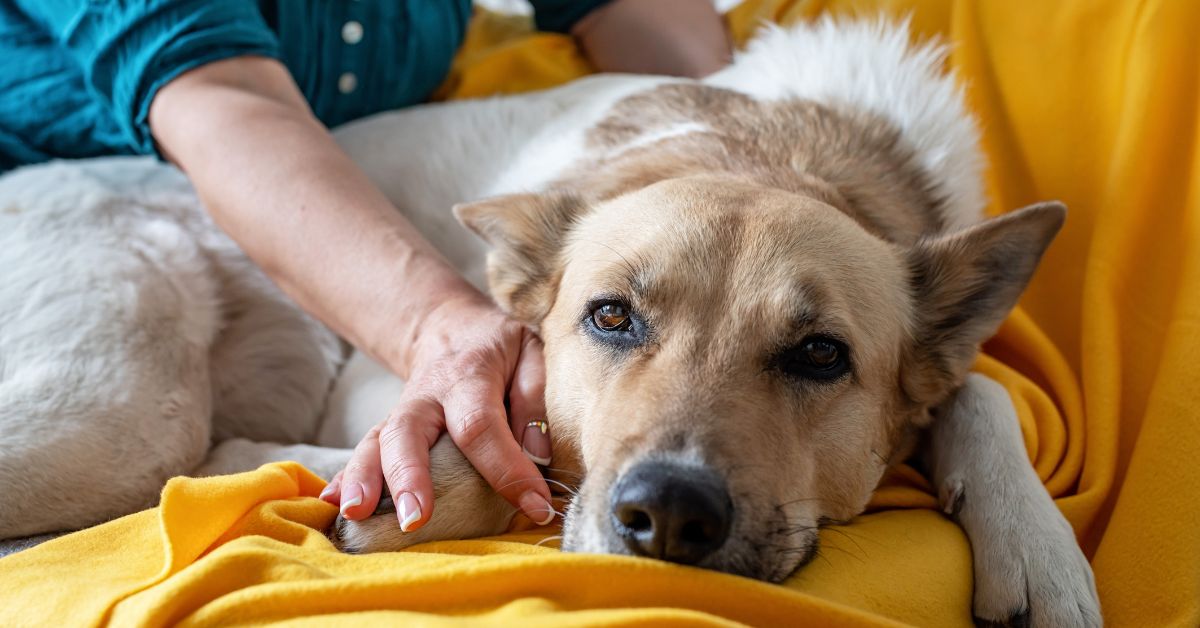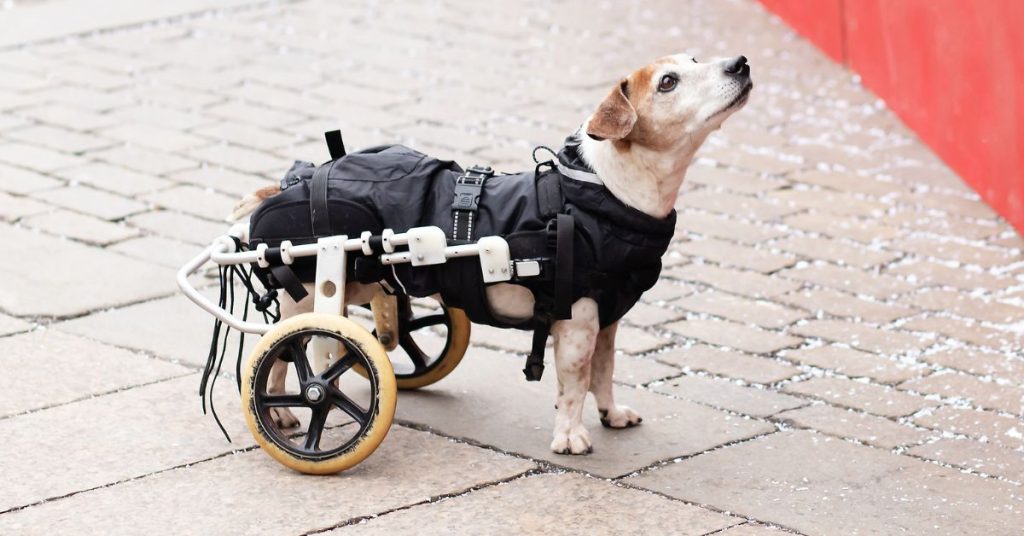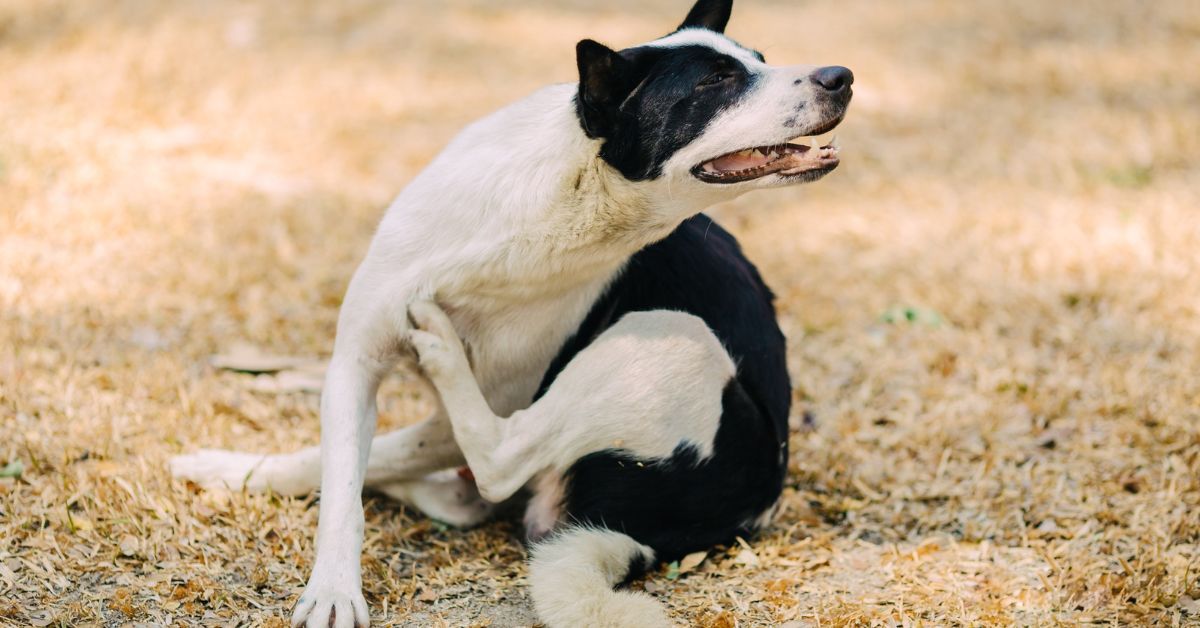Caring for a paralyzed dog can be challenging and emotional. However, with the proper knowledge and support, you can significantly improve your pet’s quality of life. Injuries, diseases, or congenital conditions can cause paralysis in dogs. Therefore, it requires dedicated care and attention. In this blog post, we will provide comprehensive guidance on how to care for your paralyzed dog.
We will cover everything from daily care routines to physical therapy and emotional support. By learning effective care techniques, you can ensure that your dog remains happy, healthy, and comfortable despite their condition. Let’s get started.
What is Paralysis in Dogs?
Paralysis in dogs occurs when muscle function is lost in a specific part of the body. This is usually caused by nerve damage but can also be due to various reasons, such as spinal injuries, diseases like intervertebral disc disease (IVDD), or congenital conditions. Paralysis can be either partial or complete, which means it can affect one or more limbs, and it can also be temporary or permanent.
Some symptoms of paralysis in dogs include the inability to move certain body parts, dragging limbs, and loss of bladder or bowel control. Understanding the type and cause of paralysis is essential so that you can provide the appropriate care and treatment for your dog.
Can Caring for a Paralyzed Dog Involve Considerations Similar to Caring for a Deaf Dog?
Caring for a paralyzed dog can share similarities with caring for a deaf dog. Both situations require special attention and adaptions to the environment. Resources like guides on “caring for your deaf dog made easy” can also provide insights into effective communication and care strategies that benefit both conditions.
What are the Causes of Paralysis in Dogs?

Paralysis in dogs can stem from a variety of causes, each requiring distinct management and treatment approaches:
- Spinal Injuries: Trauma to the spine, often resulting from accidents or falls, can damage the spinal cord, leading to paralysis.
- Intervertebral Disc Disease (IVDD): This condition, common in certain breeds, involves the degeneration or herniation of spinal discs, compressing the spinal cord and causing paralysis.
- Degenerative Myelopathy: A progressive disease that affects the spinal cord’s white matter, leading to hind limb weakness and, eventually, paralysis, typically seen in older dogs.
- Infections: Certain infections like tick paralysis or spinal meningitis can cause temporary or permanent paralysis.
- Neurological Disorders: Conditions such as vestibular disease or brain tumors can affect nerve function, leading to paralysis.
- Congenital Conditions: Some dogs are born with conditions like spina bifida or congenital malformations that can result in paralysis.
Identifying the underlying cause is crucial. It helps determine the appropriate treatment and care plan for your paralyzed dog. Consulting with a veterinarian is essential as it ensures accurate diagnosis and tailored management strategies.
How to Care for a Paralyzed Dog

Caring for a paralyzed dog requires patience, dedication, and a tailored approach to meet their unique needs. Here’s how you can provide the best care for your paralyzed dog:
1. Create a Safe Environment
Creating a safe environment is crucial for ensuring your paralyzed dog’s safety. Install ramps or steps to help your dog safely access elevated areas like beds or sofas. Remove obstacles and hazards from your home, such as loose cords or furniture that could topple over.
Consider using baby gates to restrict access to risky areas, especially if your dog has limited mobility and could accidentally stumble into dangerous areas.
2. Assist with Mobility
Assisting your paralyzed dog with mobility requires patience and proper equipment. Gradually provide mobility aids like wheelchairs or harnesses. Use positive reinforcement and treats to create a positive association.
Ensure that the mobility aid fits your dog correctly and doesn’t cause discomfort or chafing. Practice using the mobility aid in a controlled environment before venturing outdoors. It will help your dog feel more comfortable and confident using it.
3. Prevent Pressure Sores
Preventing pressure sores is crucial for your paralyzed dog’s skin health and comfort. To achieve this, invest in supportive bedding made of memory foam or orthopedic materials. It will help relieve pressure points and provide cushioning.
Additionally, cushions or blankets should be used to pad bony prominences and sensitive areas prone to pressure sores. Make it a habit to regularly inspect your dog’s skin for any signs of redness or irritation. If necessary, adjust their positioning to prevent pressure sores from developing.
4. Maintain Hygiene
Maintaining proper hygiene is crucial for preventing skin infections and maintaining the overall health of your paralyzed dog. To achieve this, you should bathe your dog regularly with a gentle, hypoallergenic shampoo.
It will help keep their skin clean and free from irritants. After bathing, it is essential to dry your dog thoroughly to prevent moisture-related skin problems such as hot spots or fungal infections.
Additionally, trimming your dog’s fur around their hindquarters and underside can contribute to cleanliness and reduce the risk of urine scald. It is essential if your dog has limited mobility and may have difficulty grooming themselves.
5. Feeding and Hydration
Ensuring adequate nutrition and hydration for your paralyzed dog is crucial for their overall well-being. You can make eating and drinking more comfortable for your dog by choosing elevated food and water bowls, especially if they have limited mobility or difficulty bending down.
It is essential to closely monitor your dog’s appetite and water intake, as some paralyzed dogs may find it difficult to eat or drink due to their condition. If necessary, you can moisten your dog’s food or offer canned food to make it easier for them to swallow. Additionally, remember to provide plenty of fresh water throughout the day to keep them properly hydrated.
6. Physical Therapy
Engaging in regular physical therapy sessions can help maintain your paralyzed dog’s muscle strength, flexibility, and overall mobility. You should work with a veterinarian or certified canine physical therapist to develop a customized physical therapy plan that suits your dog’s specific needs and abilities.
It is essential to focus on exercises that promote range of motion in your dog’s affected limbs and incorporate strengthening exercises to prevent muscle atrophy. Additionally, incorporating a passive range of motion exercises, massage, and hydrotherapy can be beneficial in improving circulation and alleviating muscle stiffness and soreness.
7. Manage Bathroom Needs
Managing your paralyzed dog’s bathroom needs requires patience, consistency, and proper hygiene practices. Establish a consistent bathroom routine for your dog. Take them outside or to a designated indoor area regularly throughout the day.
Use positive reinforcement and rewards to encourage your dog to eliminate on command. This will make it easier to predict when your dog needs to go to the bathroom. Consider using diapers, belly bands, or sanitary pads to manage accidents and maintain cleanliness.
It is essential if your dog has difficulty controlling their bladder or bowels due to their paralysis.
8. Provide Emotional Support
Providing emotional support is just as important as meeting your paralyzed dog’s physical needs. Spend quality time with your dog, engaging in activities they enjoy, such as cuddling, playing, or going for short walks in a safe environment.
Use interactive toys, puzzle feeders, and treat-dispensing toys to keep your dog mentally stimulated and entertained, reducing boredom and anxiety. Be patient and understanding, and offer plenty of affection and reassurance to help your dog adjust to their new circumstances and feel loved and secure.
9. Monitor Health
Monitoring your paralyzed dog’s health is crucial. It helps identify changes and complications early on, allowing for prompt intervention. Keep track of any changes in your dog’s condition, behavior, or mobility. Report these changes to your veterinarian as soon as possible.
Schedule regular check-ups with your veterinarian. These check-ups will monitor your dog’s overall health and well-being and assess its weight, muscle condition, and skin integrity.
Be vigilant for signs of urinary tract infections, pressure sores, or other health issues that may arise due to your dog’s paralysis. If you notice any concerning symptoms, seek veterinary care.
10. Seek Support
Seeking support from others who have experience caring for paralyzed dogs can be helpful. Join online forums, social media groups, or local support groups for paralyzed dog owners. Connect with others facing similar challenges and share experiences.
Reach out to veterinarians, veterinary specialists, or animal rehabilitation therapists for professional guidance and support tailored to your dog’s needs. If you’re struggling to cope with the demands of caring for a paralyzed dog, consider seeking professional counseling or therapy.
Read More: How To Care For A Dog With Cerebellar Hypoplasia?
Conclusion
Caring for a paralyzed dog requires patience, dedication, and a compassionate approach. By creating a safe environment, providing specialized care, and offering plenty of love and support, you can enhance your dog’s quality of life. Additionally, ensuring that they remain happy and comfortable despite their mobility limitations is essential.
Remember to seek support from veterinarians, online communities, and other resources to help you navigate this journey effectively. With proper care and attention, you can provide your paralyzed dog with a fulfilling and meaningful life.




